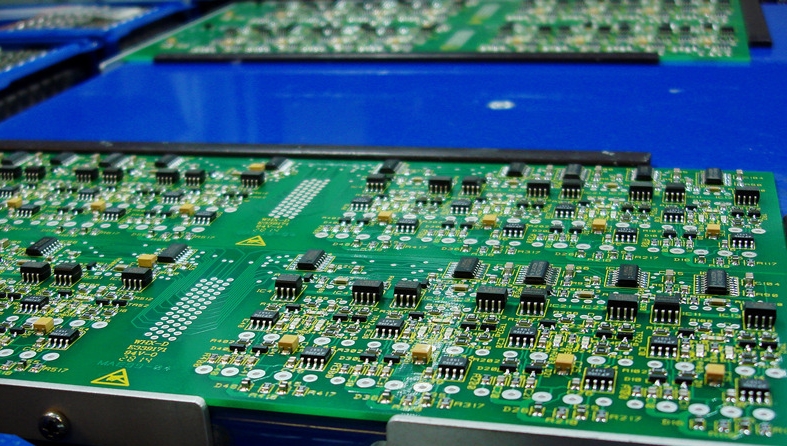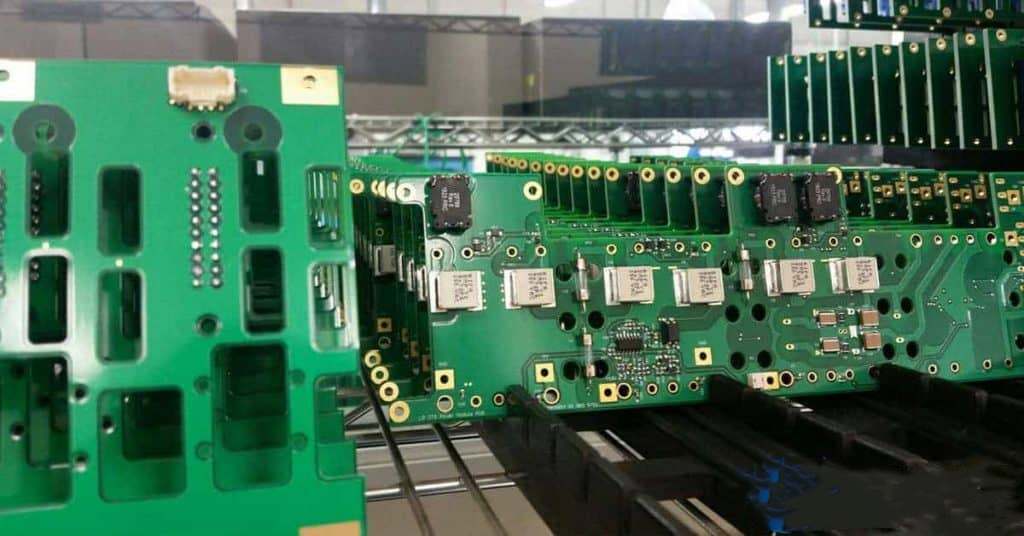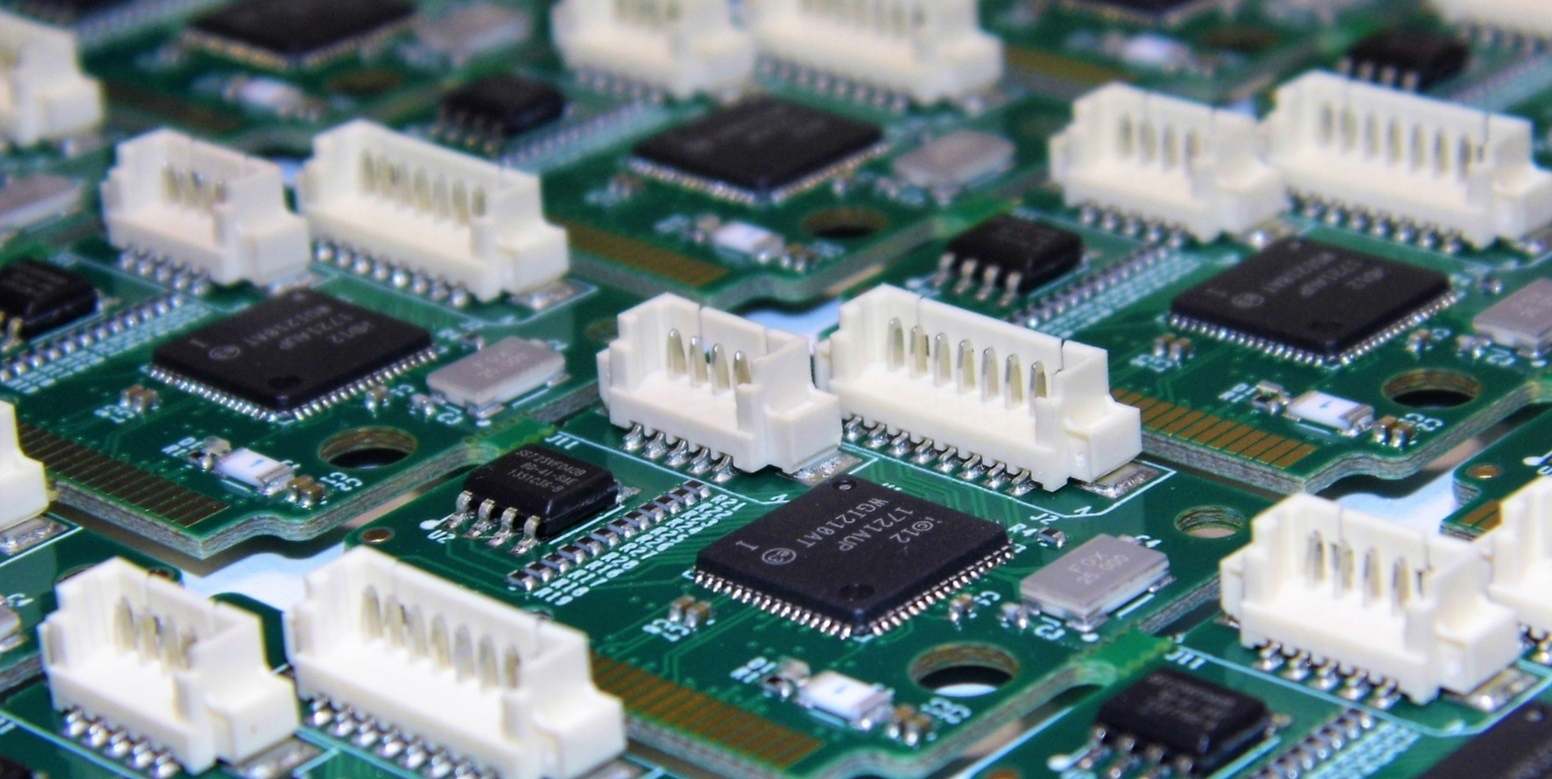Small batch PCB assembly refers to the manufacturing of printed circuit boards (PCBs) in relatively small quantities, typically ranging from 10 to 1,000 boards per order. It meets the needs of engineers, makers, and small companies who require fully assembled PCBs but do not need the large volumes required to access offshore high-volume assembly.
Small batch assembly provides significant advantages over hand assembly for prototypes and low volume production:
Benefits of Small Batch PCB Assembly
| Benefit | Description |
|---|---|
| Cost Effective | Significantly lower cost per board compared to hand assembly |
| Fast Turnaround | Average 5-10 day assembly time allows rapid prototyping iteration |
| High Reliability | Automated assembly minimizes errors versus hand assembly |
| Flexible Volumes | Scale from 10 to 1,000 boards as needed for design revisions |
This article provides a complete overview of the small batch PCB assembly process from order to delivery, examining each step required to manufacture high quality boards. We will also analyze the differences between small batch and conventional offshore high-volume assembly.
What Does the Small Batch PCB Assembly Process Look Like?

While large offshore PCB manufacturers follow similar assembly processes, specialized small batch assemblers optimize the process for fast turnaround and small volumes. Here is an overview of the small batch PCB assembly line:
Figure 1. Typical Small Batch PCB Assembly Process with Average Lead Times
There are five major steps required to take a printed circuit board from bare PCBs to a complete working assembly:
1. Sourcing Components
Selecting and procuring components is arguably the most critical part of the assembly process, as missing or incorrect parts will prevent assembly or produce faulty boards. For standard commercial components, local distributors will carry sufficient inventory with next day delivery. For harder to find or obsolete parts, specialized component sourcing expertise is required to locate quality components globally. Proper component verification is also key prior to loading onto automated assembly machines.
| Component Sourcing | Description | Lead Time |
|---|---|---|
| Local Distributor | Fast access to most commercial components | Next Day |
| Global Sourcing Expertise | Hard-to-find and obsolete components | 1-4 days |
| Component Verification | QA check for correct parts prior to assembly | 0.5 days |
2. Solder Paste Stencil Creation
Solder paste is applied to PCB pads through a laser cut metal stencil custom matched to each unique PCB design. An accurate stencil ensures proper paste release and component adhere during soldering reflow. Quality stencil fabrication is the foundation for assembling each new PCB design correctly the first time through.
| Stencil Fabrication | Description | Lead Time |
|---|---|---|
| Laser Cut to 0.001″ | Precise stencil openings aligned to PCB | 1-2 days |
| Stainless Steel | Durable for multiple small assemblies | |
| Fiducials Alignment | Correct board positioning |
3. Solder Paste Application
The stencil is used to apply solder paste – a mixture of powder solder and flux – to PCB pads in the precise locations needed to solder components. Maintaining paste condition and properly applying paste are critical to solder joint quality. Insufficient paste prevents good solder joint formation while excess paste risks short circuits between pads.
| Paste Application | Description | Lead Time |
|---|---|---|
| Solder Paste Mixing | Maintains consistent viscosity over time | 0.25 days |
| Stencil Cleaning | Ensures paste application accuracy | 0.25 days |
| Paste Inspection | Verifies adequate paste release | 0.25 days |
4. Automated Component Placement
Components must be accurately placed onto treated PCBs prior to reflow soldering. Automated pick-and-place systems use vision systems and feeders to pick components and place them onto boards with better than 0.1mm accuracy at rates exceeding 10,000 components per hour. Flexible feeder setups support components from small 0201 devices up to large connectors and smoothing capacitors. Operators perform visual checks of placed boards to catch any pickup or placement issues prior to reflow.
| Placement Process | Description | Lead Time |
|---|---|---|
| Feeder Setup | Tape and reel components setup in optimal order | 1 day |
| Pick and Place | Automated high speed component placement | 1 day |
| Operator Verify | Visual inspection of all boards after placement | 0.5 days |
5. Reflow Soldering
Finally, boards progress down a multi-zone reflow oven melting solder paste deposits to electrically and mechanically attach components to the PCB. Thermal profiling ensures components are heated to the correct time and temperature to properly solder all device types on the board without damage. Additional soldering work like through hole pinning can also be performed after reflow as needed per design prior final board wash.
| Reflow Process | Description | Lead Time |
|---|---|---|
| Reflow Thermal Profiles | Optimal ramp-soak reflow for mix of components | 0.25 days |
| Pin Through Hole PTH | Secondary soldering of non-SMD components | 0.25 days |
| Wash Boards | Remove residual flux after soldering | 0.25 days |
How Do Volumes and Lead Times Compare?

Small batch PCB assembly occupies a unique middle ground between hand assembling boards yourself and high volume offshore assembly:
Figure 2. Comparing PCB Assembly Methods by Volume and Lead Time
Hand Assembly works well from building 1-5 boards for initial prototyping rounds but lacks repeatability at scale. Full assembly from start to finish can take days to weeks if you run into any problems finding components or process issues getting boards fully soldered.
Small Batch Assembly handles volumes from 10 to 1,000 boards with the automation and quality controls needed for simple repeatable manufacturing. Lead times average 1-2 weeks door-to-door in North America or 2-4 weeks if global shipping from Asia, still much faster than volume production.
High Volume Offshore assembly achieves the lowest cost at volumes above 2,000-5,000 boards but has much longer lead times spanning 8-14 weeks from order to delivery. Long production runs lock in design revisions so small batch provides more flexibility during product development.
In summary, small batch PCB assembly brings rapid reliable assembly ideal for verifying prototypes and scaling products to small production volumes up to 1,000 boards per month.
How Do Costs Compare for Each Assembly Method?
In additional to significant differences in lead times as examined above, each assembly method has drastically different cost models:
Figure 3. Comparing Cost vs Volume for Different Assembly Methods
Hand Assembly costs are near zero relying primarily on your time for labor along with a small variable component cost per board for purchase parts. Setup is quick but takes significantly longer per board to manually place and solder all components so less time effective above 5 boards.
Small Batch Assembly became cost effective relative to hand assembly around 10-25 boards with total costs ranging from $100-250 per board for full turn-key assembled boards delivered to your door from order. Costs drop under $100 per board by 100 boards.
High Volume Offshore assembly achieves very low costs at high volumes thanks to dedicated assembly lines and bulk component pricing, but has much higher minimum order quantities spanning 250-1,000+ boards and significant tooling costs amortized into each board driving up cost below 1,000 boards. Offshore assembly only becomes clearly cheaper above roughly 2,000 boards.
What Types of Products Use Small Batch PCB Assembly?

The combination of moderate per unit cost and fast turnaround makes small batch PCB assembly ideal for a diverse mix of lower volume products:
Engineer Prototypes – Great way to get working advanced prototypes built faster with better quality than you can achieve hand assembling boards yourself.
Makers & Startups – Allows building small batches of product versions to test with groups of customers without high upfront cost of offshore production.
University Projects – Students can afford more complex projects with custom PCBs and access small assemblies for capstone assignments.
Test & Measurement – Fully assembled instrumentation boards needed for field and lab testing equipment at lower volumes
Industrial Controls – Shorter revision turns support custom controller boards for instrumentation and manufacturing equipment even down to volumes of 10-50 boards.
Specialty Products – Lower volume innovative products for audio equipment, robots, drones, IoT devices can leverage small batch assembly for ramping production.
In summary, small batch PCB assembly opens up custom electronics development to a much broader group of engineers, inventors, and companies thanks to higher quality, faster turns, and more reasonable volumes than high volume production.
What Should You Look For in A Good Small Batch Assembler?
With so many details involved in the electronics assembly process, selecting the right assembly partner becomes critical to achieving high quality boards with good yields and on time delivery. Here are the key capabilities and services to evaluate:
Breadth of Assembly Capabilities
A strong small batch assembler will offer a comprehensive range of assembly processes beyond just SMT pickup and place to fully support your boards:
- SMT Assembly – 01005 components up to large fine pitch BGAs and connectors
- Through Hole Assembly – Pins, press fit inserts, transformers/inductors
- Post Soldering – Additional soldering, thru-hole pinning, repairs
- Conformal Coating – Humidity/contamination protection
- Box Build & Cable Assembly – Final production configurations
- Design for Manufacturing – DFM analysis and recommendations
Vertical Control of Full Process
To ensure quality and reliability, best practice is to control the full process chain in house including:
- Sourcing Components
- Laser Stencil Fab
- Solder Paste Mixing
- Pick and Place Machines
- Reflow Ovens
- Testing Capabilities
Leveraging 3rd party subs introduces variability and delays into assembly. The best assemblers invest in vertical capabilities supporting the complete build process.
Quality Processes & Certifications
Electronics manufacturing is a precision process so strong quality systems and controls are vital to ensure consistent defect free outputs. Look for partners with credible 3rd party certifications like:
- ISO-9001
- IPC-A-610 Workmanship
- IPC-J-STD Soldering
- Certified IPC Trainers
Dedicated Program Management
A key benefit of small batch is hands-on support throughout the assembly process:
- Engineering Conferences
- DFM Design Reviews
- Build Scheduling
- Real-time Production Monitoring
- Proactive Issue Resolution
Check that a dedicated program manager is assigned to your project to proactively drive quality and on-time delivery.
FAQ – Frequently Asked Questions About Small Batch Assembly

Here are answers to several common questions asked around small batch PCB assembly:
How many PCB designs can be included in one small batch order?
Most small batch assemblers support at least 5-10 different board designs in a single production order by manually changing stencils and feeder setups between PCB configurations. Some investments in changeover automation and testing can support higher design mixes exceeding 25+ boards in parallel production.
Can I include both through hole and surface mount components?
Yes, leading edge small batch lines combine the latest surface mount pick and place equipment alongside secondary through hole assembly processes like pin-in-paste or wave soldering to support mixed SMT and through hole boards. Just verify your assembler’s through hole capabilities relative to number of pins and component sizes you require.
How are component shortages handled?
Reputable assemblers have established procedures to minimize risks of production delays due to shortages. Steps include maintaining minimum 6 month buffers of high usage components, daily inventory checks with suppliers, and triggered escalations to locate replacement parts if buffers drop below minimum thresholds.
Can I provide some “do not substitute” components?
Certainly, most assemblers support customer supplied components and allow restricting sourcing of sensitive analog ICs, connectors, or other custom modules to inputs provided by the customer. Be aware this can increase lead time 1-3 days to accommodate receipt, handling, and loading of your specific components.
How is quality controlled during assembly?
In process quality checks are conducted at multiple stages: solder paste inspection after application checks for voids, component placement automated optical inspection looks for skewed parts or missing devices, then post reflow visual inspection and functional testing will catch any defects escaping prior stations.
Do assemblers support turnkey box build and cable assemblies?
Many small batch providers offer additional post assembly packaging including plastic/metal enclosures, milling panels, labeling, testing configurations, and multi-pin cable harness assemblies to deliver plug-and-play functional end products beyond just bare PCB assemblies.
How are boards packaged for shipping?
Assembled boards go through a final wash then baking to remove moisture prior to apply ESD safe moisture barrier bags and packing with appropriate spacers into carton shipping boxes. Boards ship via ground domestically or DHL/FedEx internationally with tracking numbers provided.
Conclusion
As detailed above, small batch PCB assembly opens up tremendous capability supporting engineering prototyping, makers, startups, and other low to mid volume products with fast affordable assembly from 10 to 1,000 boards.
The fully automated assembly process produces boards with quality and reliability far exceeding hand assembly along with superior control and repeatability versus outsourcing offshore high volume production.
With costs dropping under $100 per board by 100 units and lead times of 5-10 working days in North America (10-20 days internationally), small batch assembly represents the new sweet spot bridging hand made and high volume manufacturing.
Selecting an assembly partner with breadth of technical capabilities, vertically integrated facilities controlling the full process, and strong focus on quality is key to ensure a positive hassle free build experience taking projects from prototypes smoothly through ramping production as volumes grow.
I hope this overview clearly explains the benefits small batch PCB assembly offers along with what to look for in an ideal assembly partner. Please reach out with any other questions!





